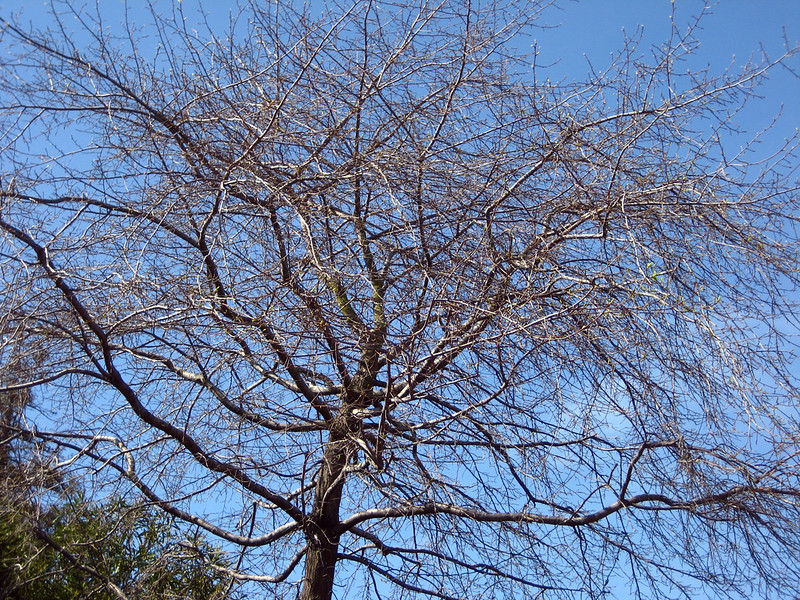Chapter 112 Nyssa sylvatica
112.1 Blackgum, tupelo

Winter silhouette of a blackgum, showing the fine branch ramification. Link to image source.
112.2 Soil: Ericaceous Mix
Ratio: 3 parts bark, 1 part peat, 1-2 parts grit
Add-ins: dolomitic limestone (MAX of 2 lbs/yd), Tree-Tone (15 lbs/yd)
pH: ~5.5-6.0 (acidic)
Moisture: Moist. Blackgums are adapted to wetter bottomland conditions.
112.3 Light
Routine: Mostly to full sun.
112.4 Cultivation Notes
112.4.1 Potting & Root Pruning
Schedule: blackgum has an aggressive taproot, so does not transplant well.
112.4.1.1 Top & Branch Management
Prune in the winter.
Heavy pruning:
Fine pruning:
Leaf pruning:

Summer foliage of a blackgum, showing the glossy leaves. Link to original image.
112.4.2 Feeding
Black gum trees are relatively slow growing but will respond well to applications of fertilizer in the fall.
112.4.3 Pests & Problems
No serious insect or disease problems. Some susceptibility to leaf spots, canker, rust, leaf miner and scale.
112.4.4 Winter Storage

Fall colors of blackgum. Their colors range from orange to dark purple. Link to original image.
Unknown
112.5 Propagation Notes
I have tried growing from freshly collected seed, but germination is erratic.
112.6 Artistic & Styling Notes
112.7 Additional Information
112.7.1 Natural History
This is a medium-sized deciduous tree with grey-brown furrowed bark and maturing to have a flat-topped crown. The leaves are shiny green with often wavy margins. They turn purple in autumn, eventually becoming an intense bright scarlet. The fruit is a black-blue, ovoid stone fruit.
The species is native to eastern North America, from New England and southern Ontario, south to central Florida and eastern Texas where it is found in a variety of habitats throughout its wide range, growing from the creek bottoms of coastal plains, up to drier upper slopes and ridges. This tree adapts to extreme climates, tolerates wet conditions, and is drought-resistant.